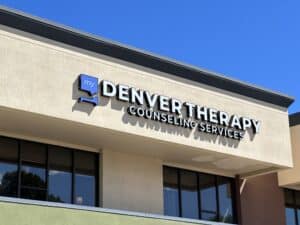If you’re grappling with anxiety or depression, it can feel incredibly isolating. The weight of constant worry, persistent sadness, or overwhelming fatigue can make it seem like you’re the only one struggling. But we want you to know two crucial things: you are far from alone, and there is effective help available.
Anxiety and depression are among the most common mental health challenges people face. Understanding the numbers can help normalize your experience and highlight the pathways toward feeling better. Let’s look at the statistics and, more importantly, how therapy provides real hope for healing.
Just How Common Are Anxiety and Depression?
The statistics reveal just how widespread these conditions are:
- Anxiety Disorders: These are the most common mental health concern in the U.S., affecting over 40 million adults (19.1%) each year, according to the Anxiety and Depression Association of America (ADAA). This includes conditions like Generalized Anxiety Disorder (affecting 6.8 million adults), Panic Disorder (6 million adults), and Social Anxiety Disorder (15 million adults). You can learn more about these statistics directly from the ADAA’s Facts & Statistics page.
- Depression: Recent data from the CDC (covering August 2021–August 2023) shows that 13.1% of U.S. adolescents and adults (age 12+) experienced depression in the past two weeks. This rate is higher among females (16.0%) than males (10.1%) and highest among adolescents aged 12-19 (19.2%). Importantly, these rates represent a significant increase compared to pre-pandemic levels. Read the full CDC Data Brief on Depression Prevalence.
These numbers clearly show that if you’re experiencing symptoms of anxiety or depression, your struggle is shared by millions.

The Anxiety-Depression Connection
It’s also very common for anxiety and depression to occur together. The ADAA notes that nearly one-half of those diagnosed with depression are also diagnosed with an anxiety disorder. Sometimes, the persistent worry of anxiety can lead to feelings of hopelessness characteristic of depression, while the low energy and motivation of depression can fuel anxiety about managing daily life. Addressing both is often key to lasting recovery.
The Treatment Gap: Effective Help is Underutilized
Despite how common these conditions are, and how treatable they can be, many people don’t receive the help they need.
- Globally, only about 1 in 4 people with an anxiety disorder receive treatment.
- Even with recent increases, the latest CDC data indicates only about 39.3% of those with depression received counseling or therapy in the past year.
Various barriers, from stigma to cost to difficulty accessing care, contribute to this gap. But the most important takeaway is that effective treatments exist.
Hope Through Healing: Therapy Effectiveness Statistics
This brings us to the most hopeful part: therapy works. Psychotherapy, particularly evidence-based approaches, is highly effective for treating both anxiety and depression.
- Overall Success: As we’ve discussed before, research consistently shows about 75% of people benefit from therapy.
- Cognitive Behavioral Therapy (CBT): This is considered a gold-standard treatment for both anxiety and depression. Studies show:
- CBT alone can be 50-75% effective for overcoming depression and anxiety.
- It significantly outperforms placebos or no treatment, with response rates around 42-50% compared to about 19% in control groups for depression.
- It helps individuals identify and change negative thought patterns and behaviors contributing to their distress, leading to significant symptom reduction and improved quality of life.
- The benefits are often long-lasting, helping individuals build coping skills for the future. Learn more about our approach to CBT and therapy for anxiety and therapy for depression.
Therapy provides a supportive space to understand your experiences, learn concrete coping strategies, and make lasting changes to how you think, feel, and behave.
Taking the First Step with My Denver Therapy
Statistics can paint a picture, but your personal journey is unique. If you recognize yourself in the descriptions of anxiety or depression, please know that you don’t have to continue struggling alone.
At My Denver Therapy, our compassionate therapists are experienced in using evidence-based approaches like CBT to help clients manage anxiety and depression effectively. We are committed to creating a supportive environment where you can heal and build a more fulfilling life.
Understanding the numbers shows you’re not alone. Taking the step to seek help shows you’re ready for change.
Ready to explore how therapy can help you? Contact My Denver Therapy today to schedule a consultation.







